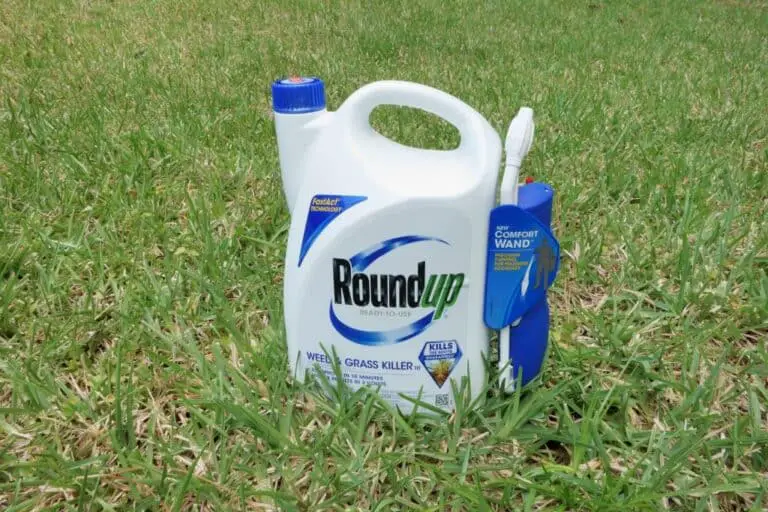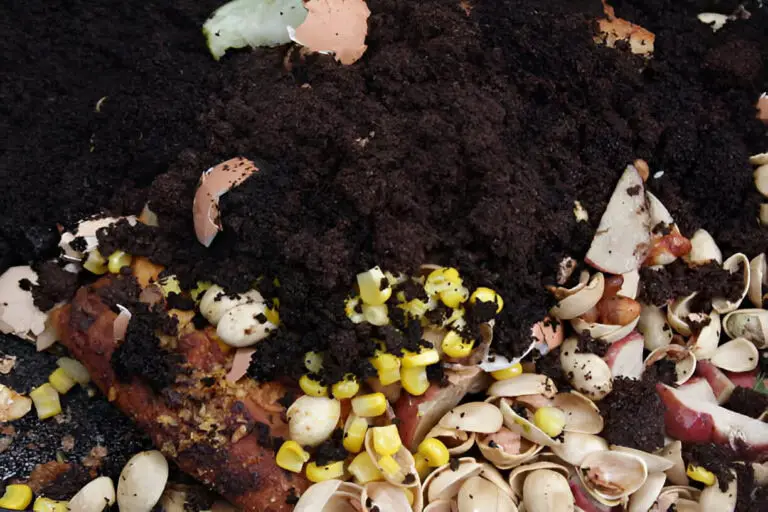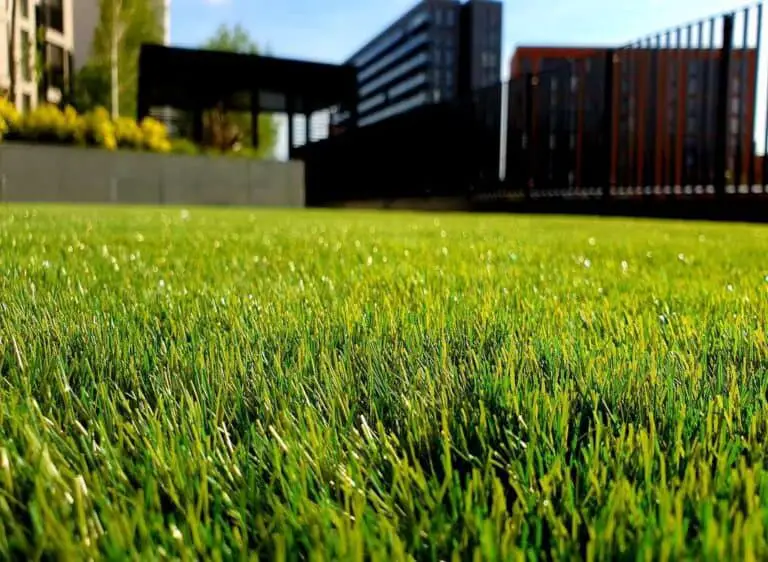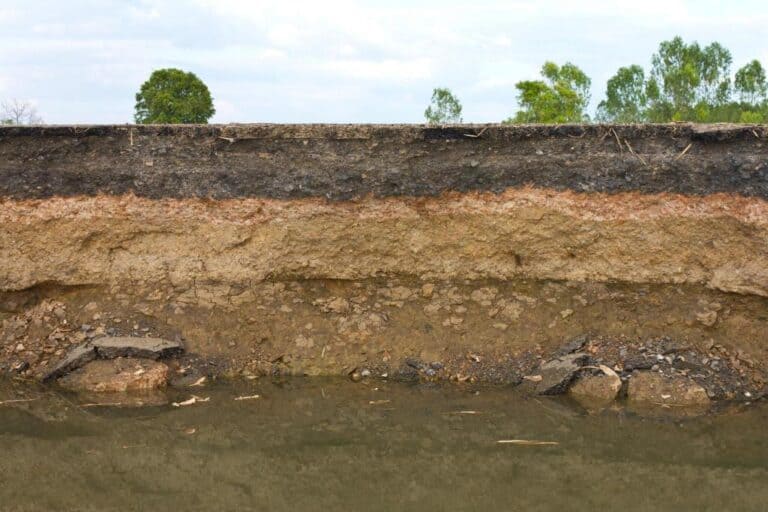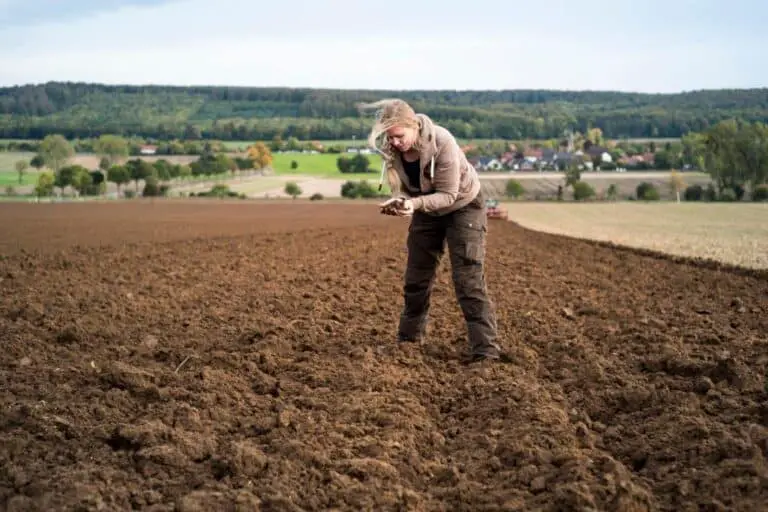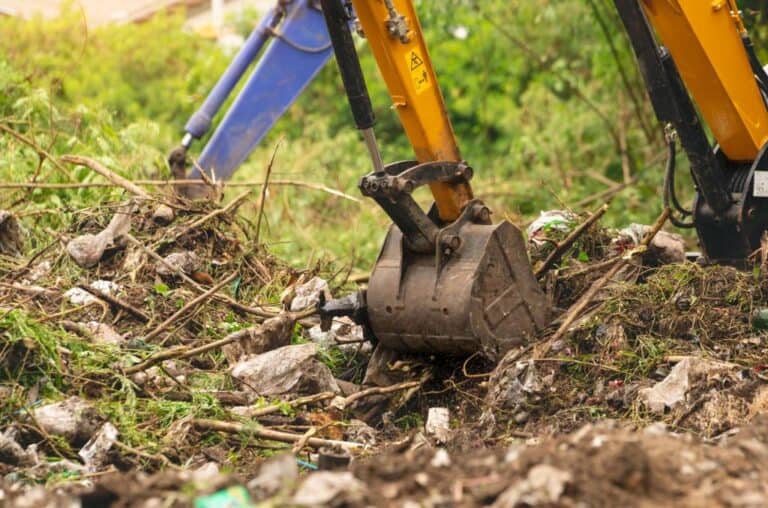Can You Sterilize Soil with Household Bleach? Is It Effective?

Gardening enthusiasts often seek the perfect recipe for nurturing their beloved plants, and soil sterilization is a tempting solution. Picture this: a clean, pathogen-free soil where seeds sprout into healthy seedlings, and plants flourish without any hindrance from pesky weeds. But here’s the twist: can you achieve this utopian soil with a household staple – bleach? Is it truly the magic elixir for garden success or a risky venture that might harm your green companions?
In this horticultural exploration, we’ll delve into the world of soil sterilization with bleach, examining its merits and demerits. As we embark on this gardening journey together, we’ll uncover the secrets of this controversial method and find out whether it is the answer to your gardening dreams or a pathway to potential pitfalls. So, put on your gardening gloves, and let’s dig deep into the captivating tale of bleach and the soil beneath our feet!
Understanding Soil Sterilization
When it comes to gardening and cultivating healthy plants, the quality of the soil plays a vital role. Soil sterilization is a technique that is used to eliminate harmful pathogens, pests, and weeds from the soil, creating a clean slate for successful plant growth. Let’s delve into the key aspects of soil sterilization and explore the use of bleach as an agent for this purpose.
Soil sterilization is the process of eradicating unwanted organisms and contaminants from the soil to reduce the risk of plant diseases and promote better plant development. By removing harmful elements, gardeners can ensure a healthier environment for their plants, leading to improved yields and stronger root systems.
Various methods are employed to achieve soil sterilization, each with its own unique advantages and disadvantages. From solarization to steam treatment, chemical fumigation to the use of bleach, gardeners have a range of options to choose from based on their specific needs and preferences.
In this article, we will focus on one particular method – the use of bleach for soil sterilization. Bleach, a commonly available household product, has been considered by some gardeners as an effective means to eliminate harmful organisms in the soil. However, its usage and potential consequences warrant a closer examination.
The Science Behind Bleach and Soil Sterilization
Before delving into its sterilizing properties, let’s understand what bleach is. Bleach is a chemical solution primarily composed of sodium hypochlorite, which gives it its powerful disinfectant properties. It is widely used for cleaning and sanitizing various surfaces due to its ability to break down and oxidize organic materials.
Bleach is known for its strong oxidizing effect, which is why it is effective at killing bacteria, viruses, and fungi. When bleach comes into contact with soil, it reacts with organic matter and disrupts the cellular structures of microorganisms, rendering them inactive.
During the soil sterilization process, bleach undergoes chemical reactions that release oxygen and chlorine. These by-products contribute to the elimination of pathogens and other harmful elements in the soil.
While bleach can effectively sterilize the soil, its powerful nature can also have unintended consequences. It not only eradicates harmful microorganisms but may also affect beneficial soil microbes and essential nutrients, potentially disrupting the delicate balance of the soil ecosystem.
The Process of Soil Sterilization with Bleach
The process of soil sterilization using bleach typically involves a few simple steps:
- Choose the Right Soil: Begin with a high-quality soil mix suitable for your specific plants. Sterilizing poor-quality soil may not yield the desired results.
- Moisten the Soil: Dampen the soil to the point where it’s moist but not soaked. Excessive moisture can hinder the sterilization process.
- Prepare the Bleach Solution: In a separate container, prepare a solution of bleach and water. A common ratio is one part bleach to nine parts water. Use bleach with 5.25% to 8.25% sodium hypochlorite as the active ingredient.
- Mix the Bleach Solution: Gently pour the bleach solution over the soil, ensuring even distribution. Use enough solution to thoroughly moisten the entire soil surface.
- Cover and Wait: Cover the soil with a plastic tarp or sheet to retain moisture and prevent the escape of bleach fumes. Allow the bleach to work on the soil for at least 30 minutes.
- Rinse the Soil: After the waiting period, remove the tarp and thoroughly rinse the soil with water. This step is crucial to removing any residual bleach, as it can be harmful to plants.
- Let It Dry: Once rinsed, allow the soil to dry completely before planting or using it in pots. This helps ensure any remaining traces of bleach are gone.
Effectiveness of Bleach in Soil Sterilization
Using bleach for soil sterilization can indeed be effective in reducing pathogen populations and eliminating weed seeds. However, it’s essential to remember that bleach is a double-edged sword.
While it can sanitize the soil, it also impacts beneficial soil microorganisms and plant roots. As these microorganisms play a crucial role in soil health and plant nutrition, overusing bleach may upset the delicate balance necessary for a thriving garden.
The use of bleach for soil sterilization has been a topic of interest among gardeners and researchers alike. Studies have been conducted to assess its efficacy and long-term impact on soil health and plant growth.
Several factors come into play when using bleach for soil sterilization. The concentration of bleach, the duration of application, and the soil’s composition can all influence how successful the sterilization process will be.
Gardeners often weigh the pros and cons of different soil sterilization techniques. By comparing bleach with other popular methods, such as steam treatment or solarization, gardeners can make informed decisions based on their gardening goals.
For those considering using bleach for soil sterilization, you need to know the appropriate concentration and application techniques to achieve effective sterilization while minimizing potential harm to the soil and plants.
Harmful Effects of Bleach on Plants
Bleach’s potency as a sterilizing agent can inadvertently harm your precious plants if not used with caution. The chemical can damage plant roots, leading to stunted growth or even plant death. Additionally, beneficial mycorrhizal fungi that aid in nutrient uptake may also be affected, compromising the overall health of your garden.
Direct and Indirect Impacts of Bleach on Plant Health
While bleach can rid the soil of harmful organisms, it can also directly affect the health of plants. Prolonged exposure or excessive application of bleach can have negative consequences for plant growth and development.
Understanding Plant Sensitivity to Bleach Exposure
Different plant species and varieties exhibit varying degrees of sensitivity to bleach exposure. Some plants may tolerate it better, while others may suffer significant damage even from minimal exposure.
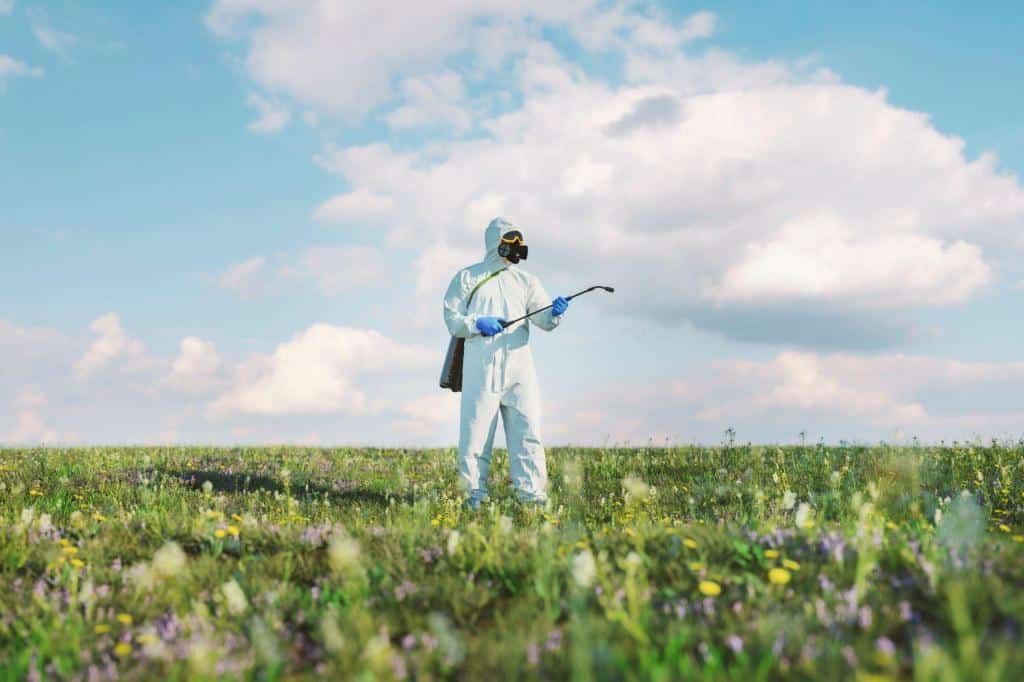
Cons and Risks of Soil Sterilization with Bleach
While bleach can be useful for soil sterilization, there are significant risks and drawbacks to consider:
- Plant Damage: Bleach is a strong chemical that can be harmful to plants, especially in higher concentrations. It can lead to root damage and inhibit the growth of beneficial soil microorganisms.
- Soil Health Impact: The beneficial microbes that naturally exist in healthy soil can be adversely affected or killed by bleach. These microorganisms play a crucial role in soil fertility and plant nutrition.
- Environmental Concerns: Disposing of bleach-contaminated soil can be problematic as the chemical can leach into the environment and harm ecosystems.
- Residual Bleach: Ensuring that all bleach is rinsed from the soil is essential. Even small amounts of residual bleach can have detrimental effects on plants.
Precautions and Safety Measures
If you choose to sterilize soil with bleach, exercising caution and employing safety measures is paramount. Here are some essential precautions:
- Proper Dilution: Always dilute bleach with water, as using it in its concentrated form can cause severe harm to plants.
- Accurate Application: Apply the bleach solution carefully, ensuring even distribution without saturating the soil excessively.
- Thorough Rinsing: After the sterilization process, thoroughly rinse the soil to remove any residual bleach, preventing potential harm to your plants.
- Mindful Use: Consider alternative soil sterilization methods like solarization or steam sterilization, which are gentler on the soil and environment.
- Testing on a Small Scale: Before treating an entire garden, conduct a trial on a small patch of soil to observe the response of plants and soil health.
Remember, gardening is an art that requires experimentation and adaptability. While bleach may have its place in soil sterilization, striking a balance with the overall health of your garden is essential. Embrace organic practices and sustainable gardening methods to ensure a harmonious coexistence between your plants and the soil they call home. Happy gardening!
Alternatives to Bleach for Soil Sterilization
1. Organic and Natural Soil Sterilization Methods
For gardeners seeking environmentally friendly alternatives to bleach, several organic and natural soil sterilization methods are available. These methods harness the power of heat, sunlight, or non-toxic substances to sterilize the soil effectively.
2. Non-Chemical Approaches to Soil Disinfection
Steam treatment, solarization, and soil pasteurization are examples of non-chemical soil sterilization approaches that can yield satisfactory results without the potential drawbacks of using bleach.
3. Advantages of Eco-Friendly Alternatives Over Bleach
Organic soil sterilization methods often offer additional benefits, such as preserving beneficial soil microbes, maintaining soil structure, and contributing to a more sustainable gardening practice.
4. Balancing Effectiveness and Environmental Impact
Gardeners should weigh the effectiveness of different soil sterilization methods against their environmental impact to choose the approach that aligns best with their gardening values.
Conclusion
In the world of gardening, the inquiry into using bleach as a soil sterilization agent has unveiled a spectrum of insights and considerations. We’ve traversed the landscape of pros and cons surrounding this method, all while pondering its potential impact on our cherished plants. Our journey through this exploration underscores the delicate balance between soil sterilization and the preservation of vital microorganisms, raising awareness of the precautions necessary when embracing bleach in our gardening endeavors.
Delving into the realm of using bleach for soil sterilization, we’ve encountered a dichotomy of advantages and disadvantages. The potency of bleach in eradicating harmful pathogens and weed seeds stands as a clear advantage. However, as we’ve gleaned from our discussion, its effectiveness is a double-edged sword, as it can inadvertently disrupt the ecosystem of beneficial microorganisms that nurture the soil’s health.
Navigating the incorporation of bleach into gardening practices demands a mindful approach. Precautions emerge as the cornerstone of this journey, emphasizing the necessity of dilution and moderation. By carefully calibrating bleach concentration and ensuring proper application, gardeners can harness its potential while safeguarding the intricate web of life within the soil.
As the curtain draws on our exploration, one question lingers: can bleach and plant vitality coexist harmoniously? Through our analysis, it’s evident that moderation, knowledge, and meticulous care are the linchpins of achieving this equilibrium. By finding the optimal balance between sterilization and ecological harmony, gardeners can foster healthy plants while preserving the intricate balance of their garden’s ecosystem. In the realm of bleach and gardening, wisdom prevails when wielded with a discerning touch.
Before attempting to sterilize the soil, consider the needs of your plants and the potential consequences. Opt for alternative methods that are gentler on the soil and environment whenever possible. Remember, a thriving garden begins with the soil, so prioritize its health and balance to foster robust plant growth and a sustainable ecosystem.
FAQs on Bleach for Soil Sterilization
What concentration of bleach is safe for soil sterilization?
A safe concentration for soil sterilization is 1 part bleach to 9 parts water. Using higher concentrations can harm plant roots and beneficial soil microbes.
Can bleach harm plant roots when used for soil sterilization?
Yes, bleach can harm plant roots if used in high concentrations. It’s crucial to dilute bleach properly and rinse the soil thoroughly after sterilization.
Are there natural alternatives to bleach for soil sterilization?
Yes, natural alternatives include solarization (using sunlight to raise soil temperature) and steam sterilization, both of which are gentler on the soil and environment.
How long does it take for soil to recover after bleach sterilization?
The recovery time depends on factors like soil type and plant species. Generally, it may take several weeks to months for beneficial soil microbes to reestablish.
Is bleach harmful to beneficial soil microbes?
Yes, bleach can harm beneficial soil microbes, affecting soil health and nutrient cycling.
Can I reuse soil after sterilizing it with bleach?
Yes, you can reuse the soil, but it’s crucial to ensure all bleach is rinsed out and allow the soil to recover before planting.
Can I use bleach to sterilize soil for all types of plants?
While bleach can be used, consider its potential harm to plants and explore other soil sterilization methods, especially for sensitive or delicate plant species.
Are there any organic options that are as effective as bleach for soil sterilization?
While no organic option matches bleach’s potency, solarization and steam sterilization are effective and eco-friendly alternatives.
Should I adjust the pH of the soil after using bleach for sterilization?
It’s essential to monitor soil pH after bleach sterilization. If pH is affected, adjust it to suit the needs of the plants you intend to grow.
Can I sterilize soil with bleach indoors without harming my household plants?
Sterilizing soil with bleach indoors can be risky, as bleach fumes and residues may harm household plants. It’s safer to sterilize soil outdoors.
Is it possible to restore the soil’s microbial life after bleach sterilization?
Yes, with time and proper care, beneficial soil microbes can return after bleach sterilization. Focus on organic practices to promote microbial activity.

